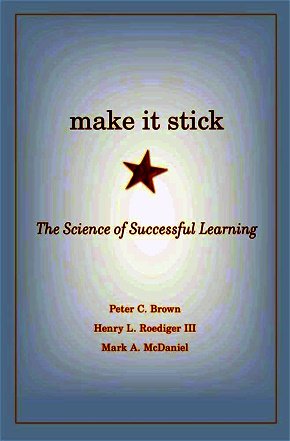8 Make It Stick 200
Notes 257
Suggested Reading 285
Ac know ledg ments 289
Index 295
Preface
People generally are going about learning in the wrong ways. Empirical research into how we learn and remember shows that much of what we take for gospel about how to learn turns out to be largely wasted effort. Even college and medical students— whose main job is learning—
rely on study techniques that are far from optimal. At the same time, this fi eld of research, which goes back 125 years but has been particularly fruitful in recent years, has yielded a body of insights that constitute a growing science of learning: highly effective, evidence- based strategies to replace less effective but widely accepted practices that are rooted in theory, lore, and intuition. But there’s a catch: the most effective learning strategies are not intuitive.
Two of us, Henry Roediger and Mark McDaniel, are cognitive scientists who have dedicated our careers to the study of learning and memory. Peter Brown is a storyteller. We have ix
Preface ê x teamed up to explain how learning and memory work, and we do this less by reciting the research than by telling stories of people who have found their way to mastery of complex knowledge and skills. Through these examples we illuminate the principles of learning that the research shows are highly effective. This book arose in part from a collaboration among eleven cognitive psychologists. In 2002, the James S.
McDonnell Foundation of St. Louis, Missouri, in an effort to better bridge the gap between basic knowledge on learning in cognitive psychology and its application in education, awarded a research grant “Applying Cognitive Psychology to Enhance Educational Practice” to Roediger and McDaniel and nine others, with Roediger as the principal investigator.
The team collaborated for ten years on research to translate cognitive science into educational science, and in many respects this book is a direct result of that work. The researchers and many of their studies are cited in the book, the notes, and our acknowledgments. Roediger’s and McDaniel’s work is also supported by several other funders, and McDaniel is the co-director of Washington University’s Center for Integrative Research in Learning and Memory.
Most books deal with topics serially— they cover one topic, move on to the next, and so on. We follow this strategy in the sense that each chapter addresses new topics, but we also apply two of the primary learning principles in the book: spaced repetition of key ideas, and the interleaving of different but related topics. If learners spread out their study of a topic, returning to it periodically over time, they remember it better.
Similarly, if they interleave the study of different topics, they learn each better than if they had studied them one at a time in sequence. Thus we unabashedly cover key ideas more than once, repeating principles in different contexts across the book.
Preface ê xi The reader will remember them better and use them more effectively as a result.
This is a book about what people can do for themselves right now in order to learn better and remember longer. The responsibility for learning rests with every individual. Teachers and coaches, too, can be more effective right now by helping students understand these principles and by designing them into the learning experience. This is not a book about how education policy or the school system ought to be reformed.
Clearly, though, there are policy implications. For example, college professors at the forefront of applying these strategies in the classroom have experimented with their potential for narrowing the achievement gap in the sciences, and the results of those studies are eye opening.
We write for students and teachers, of course, and for all readers for whom effective learning is a high priority: for trainers in business, industry, and the military; for leaders of professional associations offering in- service training to their members; and for coaches. We also write for lifelong learners nearing middle age or older who want to hone their skills so as to stay in the game.
While much remains to be known about learning and its neural underpinnings, a large body of research has yielded principles and practical strategies that can be put to work immediately, at no cost, and to great effect.
M A K E I T S T I C K
1
Learning Is Misunderstood
Early in his career as a pi
lot, Matt
Brown was fl ying a twin- engine Cessna northeast out of Har-lingen, Texas, when he noticed a drop in oil pressure in his right engine. He was alone, fl ying through the night at eleven thousand feet, making a hotshot freight run to a plant in Ken-tucky that had shut down its manufacturing line awaiting product parts for assembly.
He reduced altitude and kept an eye on the oil gauge, hoping to fl y as far as a planned fuel stop in Louisiana, where he could ser vice the plane, but the pressure kept falling. Matt has been messing around with piston engines since he was old enough to hold a wrench, and he knew he had a problem.
He ran a mental checklist, fi guring his options. If he let the oil pressure get too low he risked the engine’s seizing up. How much further could he fl y before shutting it down? What would happen when he did? He’d lose lift on the right side, 1
Make It Stick ê 2
but could he stay aloft? He reviewed the tolerances he’d memorized for the Cessna 401. Loaded, the best you could do on one engine was slow your descent. But he had a light load, and he’d burned through most of his fuel. So he shut down the ailing right engine, feathered the prop to reduce drag, increased power on the left, fl ew with opposite rudder, and limped another ten miles toward his intended stop. There, he made his approach in a wide left- hand turn, for the simple but critical reason that without power on his right side it was only from a left- hand turn that he still had the lift needed to level out for a touchdown.
While we don’t need to understand each of the actions Matt took, he certainly needed to, and his ability to work himself out of a jam illustrates what we mean in this book when we talk about learning: we mean acquiring knowledge and skills and having them readily available from memory so you can make sense of future problems and opportunities.
There are some immutable aspects of learning that we can probably all agree on:
First, to be useful, learning requires memory, so what we’ve learned is still there later when we need it.
Second, we need to keep learning and remembering all our lives. We can’t advance through middle school without some mastery of language arts, math, science, and social studies.
Getting ahead at work takes mastery of job skills and diffi cult colleagues. In retirement, we pick up new interests. In our dotage, we move into simpler housing while we’re still able to adapt. If you’re good at learning, you have an advantage in life.
Third, learning is an acquired skill, and the most effective strategies are often counterintuitive.
Learning Is Misunderstood ê 3
Claims We Make in This Book
You may not agree with the last point, but we hope to persuade you of it. Here, more or less unadorned in list form, are some of the principal claims we make in support of our argument. We set them forth more fully in the chapters that follow.
Learning is deeper and more durable when it’s effortful.
Learning that’s easy is like writing in sand, here today and gone tomorrow.





















